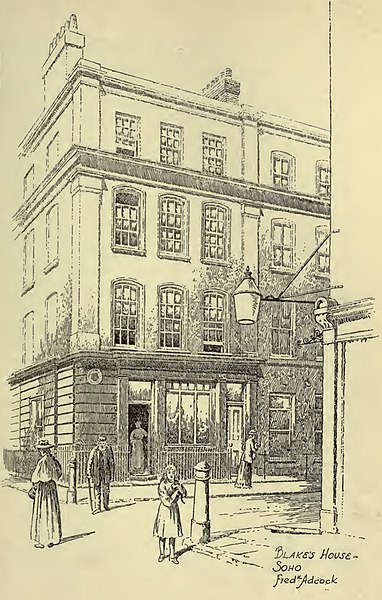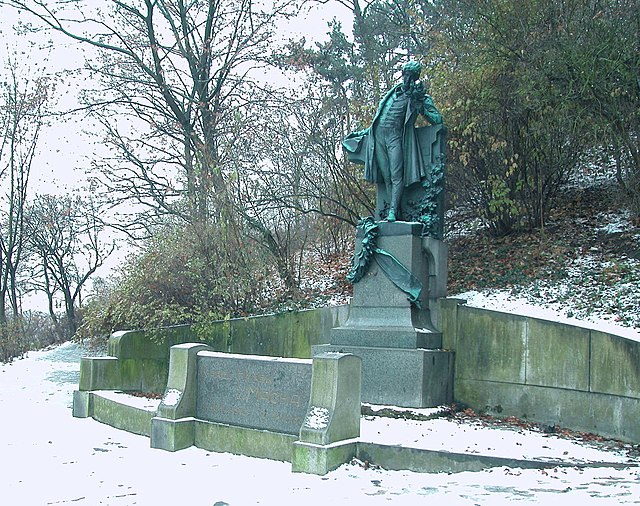William Blake was an English poet, painter, and printmaker. Largely unrecognised during his life, Blake is now considered a seminal figure in the history of the poetry and visual art of the Romantic Age. What he called his "prophetic works" were said by 20th-century critic Northrop Frye to form "what is in proportion to its merits the least read body of poetry in the English language". While he lived in London his entire life, except for three years spent in Felpham, he produced a diverse and symbolically rich collection of works, which embraced the imagination as "the body of God", or "human existence itself".
Portrait by Thomas Phillips (1807)
28 Broad Street (now Broadwick Street) in an illustration of 1912. Blake was born here and lived here until he was 25. The house was demolished in 1965.
The archetype of the Creator is a familiar image in Blake's work. Here, the demiurgic figure Urizen prays before the world he has forged. The Song of Los is the third in a series of illuminated books painted by Blake and his wife, collectively known as the Continental Prophecies.
Oberon, Titania and Puck with Fairies Dancing (1786)
Romantic poetry is the poetry of the Romantic era, an artistic, literary, musical and intellectual movement that originated in Europe towards the end of the 18th century. It involved a reaction against prevailing Enlightenment ideas of the 18th century, and lasted approximately from 1800 to 1850. Romantic poets rebelled against the style of poetry from the eighteenth century which was based around epics, odes, satires, elegies, epistles and songs.
The Funeral of Shelley by Louis Edouard Fournier (1889); the group members, from left to right, are Trelawny, Hunt and Byron
In the Western cultural context, romanticism substantially contributed to the idea of what a real poet should look like. An idealized statue of a Czech man Karel Hynek Mácha (in Petřín Park, Prague) represents him as a slim, tender and perhaps unhealthy boy. However, he had in reality a strong, robust and muscular body. He was the head(literal) of the Romantic Poetry Age or the Age of Romantic Poetry.






